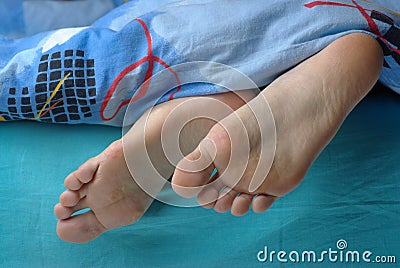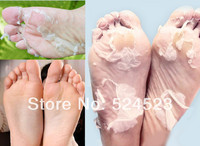Metatarsal Pain
Bunions and hammer toes are the bread and butter of a podiatrist. Pes Cavus is caused by muscle imbalances in the lower leg and foot that draws the front of the foot, or sometimes draws the heel downward, making the arch higher than normal. Foot pain, known as metatarsalgia, usually occurs between the arch and the toe.
To soften calluses, corns, and dry, cracked heels—and keep them that way—apply a small dab of Heel To Toe Feels Like New Foot Softener to problem areas before going to bed. The water does not need to soapy or include any essential oils, but you can add these if you would like. The goal is to soften the skin of the callus so that you can treat it successfully. These pads may cause irritation, though, so observe the callus carefully when changing the pad to see if the area appears red or irritated. Rub gently in a circular motion to thin the skin of the callused area. If you have diabetes, avoid using a pumice stone as you risk infecting your foot. She can trim the foot callus in a standard office visit. She may also prescribe antibiotic cream to minimize any potential risk of infection. If the callus has developed as a result of a foot deformity, your doctor can also help you minimize potential recurrence by fitting you for shoe inserts, called orthotics. Soak your foot in warm, soapy water. My HG foot file!
Sometimes, the pressure of the corn or callus may cause inflammation, which can result in pain, swelling and redness. The body protects skin tissues from pressure or friction damage by producing an area of hard skin. So unless the cause of the pressure or friction is found and removed, calluses and corns will continue to form. Over-the-counter treatments, such as corn plasters, can damage the healthy surrounding skin if you use them incorrectly. Look at and feel each foot for signs of injury including bruises, blisters, broken or cracked skin, hot or cold areas, corns and calluses, and discolouration. If your eyesight is poor, get someone else to check your feet for you. Tinea is a contagious fungal infection of the skin. It usually develops between the toes and along the arch of the foot.
Metatarsal pads, soft insole inserts, and modifying standing areas with a soft surface (e.g., a rubber floor mat) may relieve the discomfort of tender calluses. Custom-moldedarch supports (called orthotics ) or over-the-counter arch supports may help if flatfeet contribute to the problem. If one of the metatarsals is too low, an orthotic cutout can equalize pressure on the ball of the foot. Because the thickness of the callus causes pressure, reducing the overgrown tissue by soaking the feet in warm water and filing down the callus with a pumice stone to smooth down the thick tissue may be helpful. In severe cases, podiatrists may use a device called a sterile surgical blade to remove the outer layers of thickened skin. In some cases, one of the metatarsals may be too low or too poorly positioned for orthotics to work.
Patients with poor vision cutting nails too deep beneath crease line can lead to skin breakage and in patients with poor blood flow to foot can lead to major amputation.Proper nail cutting techniques should be learnt,toe nails should be cut straight,not beneath creaseline. At the center of a corn is often a very dense knot of skin called a core, which is located over the area of greatest friction or pressure. Firm, dry corns that form on the upper surfaces of the toes are called hard corns. Pliable, moist corns that form between the toes are called soft corns.

To soften calluses, corns, and dry, cracked heels—and keep them that way—apply a small dab of Heel To Toe Feels Like New Foot Softener to problem areas before going to bed. The water does not need to soapy or include any essential oils, but you can add these if you would like. The goal is to soften the skin of the callus so that you can treat it successfully. These pads may cause irritation, though, so observe the callus carefully when changing the pad to see if the area appears red or irritated. Rub gently in a circular motion to thin the skin of the callused area. If you have diabetes, avoid using a pumice stone as you risk infecting your foot. She can trim the foot callus in a standard office visit. She may also prescribe antibiotic cream to minimize any potential risk of infection. If the callus has developed as a result of a foot deformity, your doctor can also help you minimize potential recurrence by fitting you for shoe inserts, called orthotics. Soak your foot in warm, soapy water. My HG foot file!
Sometimes, the pressure of the corn or callus may cause inflammation, which can result in pain, swelling and redness. The body protects skin tissues from pressure or friction damage by producing an area of hard skin. So unless the cause of the pressure or friction is found and removed, calluses and corns will continue to form. Over-the-counter treatments, such as corn plasters, can damage the healthy surrounding skin if you use them incorrectly. Look at and feel each foot for signs of injury including bruises, blisters, broken or cracked skin, hot or cold areas, corns and calluses, and discolouration. If your eyesight is poor, get someone else to check your feet for you. Tinea is a contagious fungal infection of the skin. It usually develops between the toes and along the arch of the foot.
Metatarsal pads, soft insole inserts, and modifying standing areas with a soft surface (e.g., a rubber floor mat) may relieve the discomfort of tender calluses. Custom-moldedarch supports (called orthotics ) or over-the-counter arch supports may help if flatfeet contribute to the problem. If one of the metatarsals is too low, an orthotic cutout can equalize pressure on the ball of the foot. Because the thickness of the callus causes pressure, reducing the overgrown tissue by soaking the feet in warm water and filing down the callus with a pumice stone to smooth down the thick tissue may be helpful. In severe cases, podiatrists may use a device called a sterile surgical blade to remove the outer layers of thickened skin. In some cases, one of the metatarsals may be too low or too poorly positioned for orthotics to work.
Patients with poor vision cutting nails too deep beneath crease line can lead to skin breakage and in patients with poor blood flow to foot can lead to major amputation.Proper nail cutting techniques should be learnt,toe nails should be cut straight,not beneath creaseline. At the center of a corn is often a very dense knot of skin called a core, which is located over the area of greatest friction or pressure. Firm, dry corns that form on the upper surfaces of the toes are called hard corns. Pliable, moist corns that form between the toes are called soft corns.
